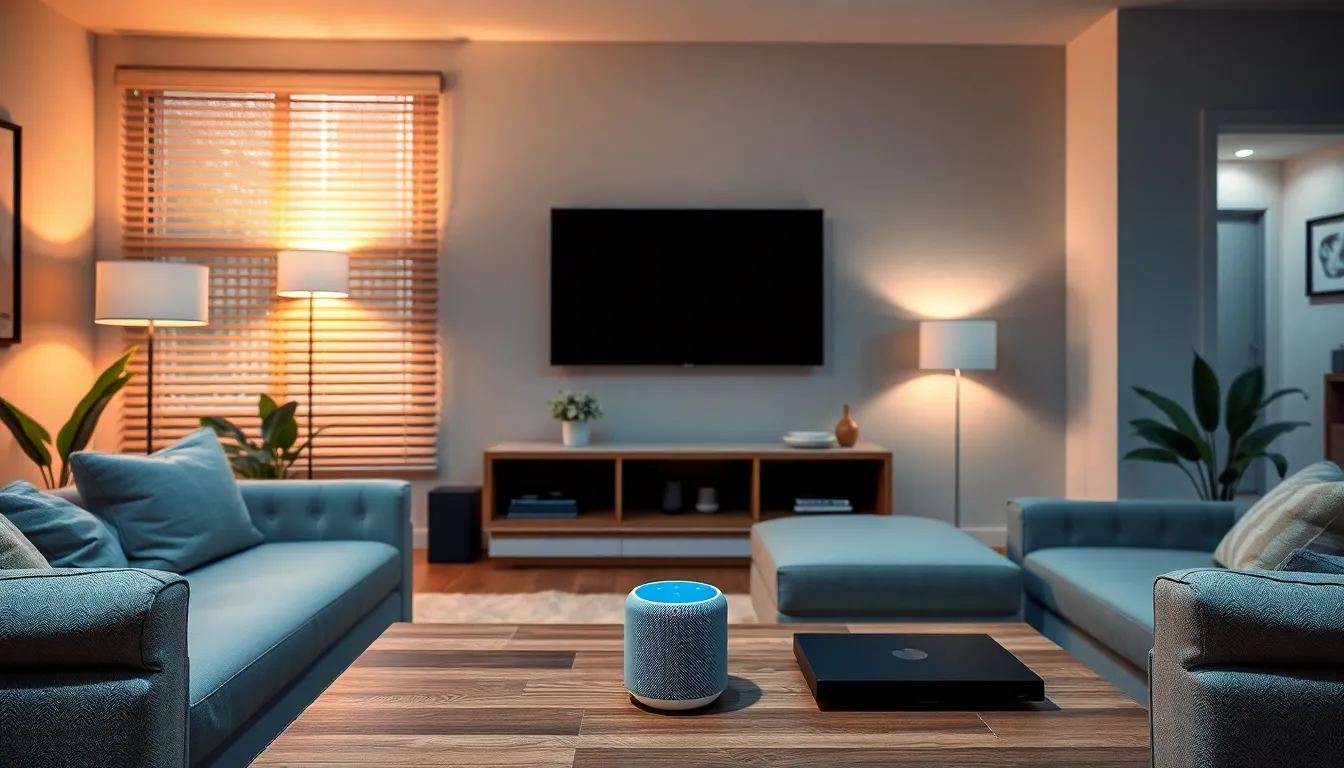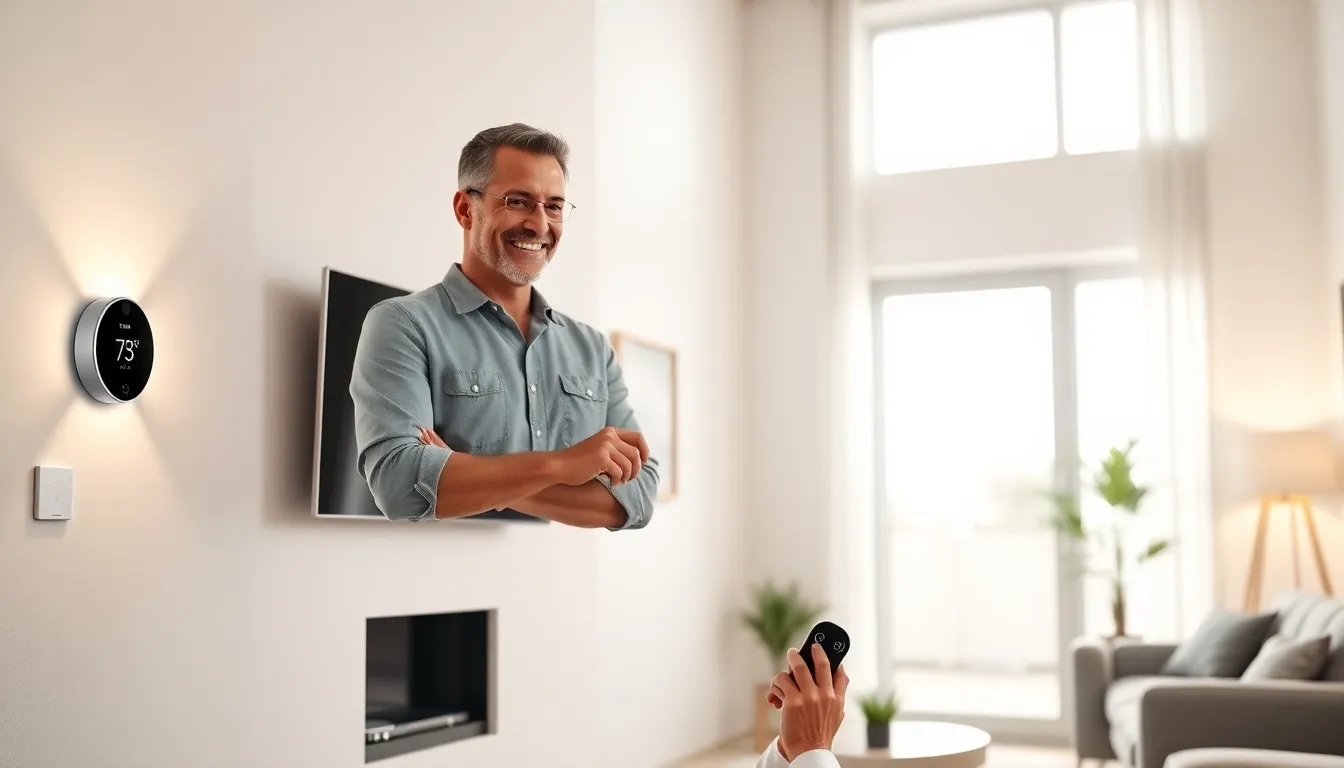Table of Contents
ToggleImagine walking into your home, and with just a voice command, the lights dim, your favorite playlist starts, and the thermostat adjusts to the perfect temperature. Sounds like a scene from a sci-fi movie, right? Welcome to the world of smart home installation, where convenience meets cutting-edge technology.
In today’s fast-paced life, who wouldn’t want a home that anticipates their needs? From security systems that keep watch while you binge-watch your favorite series to smart fridges that remind you when you’re out of milk, smart home devices are here to make life easier and a bit more entertaining. So, if you’re ready to transform your living space into a tech-savvy haven, buckle up! This guide will walk you through the ins and outs of smart home installation and help you embrace the future—one gadget at a time.
Overview of Smart Home Installation
Smart home installation transforms traditional living environments into modern, automated spaces. Integrating smart devices simplifies everyday tasks and enhances overall convenience. Homeowners can connect various systems like lighting, HVAC, security, and entertainment through a central hub.
The installation process begins with assessing existing infrastructure. Evaluating the current electrical systems helps determine compatibility with smart technology. Identifying the areas for automation establishes a clear plan, ensuring that every installation aligns with specific needs.
Choosing devices is crucial in this journey. Smart speakers allow voice control for many connected systems. Automated security cameras and locks enhance safety through remote monitoring. Smart thermostats conserve energy while maintaining comfort in homes.
Installation typically consists of setting up devices and configuring networks. Wireless connections generally involve Wi-Fi or Bluetooth, enabling seamless communication between devices. Configuring a mobile app or a web interface allows easy control over installed systems.
After installation, ongoing management of smart devices helps maintain functionality. Updating firmware ensures that devices run efficiently and securely. Integrating devices into daily routines maximizes the benefits of automation, making life simpler.
Costs vary based on the size of the home and the technology chosen. Homeowners should budget for both initial installation and potential maintenance. Factors like device complexity and connectivity influence the overall investment.
Smart home installation promises enhanced convenience, security, and energy efficiency. Embracing technology today can lead to a future of innovative living.
Benefits of Smart Home Installation

Smart home installation offers numerous advantages that significantly enhance daily living. These advantages include increased convenience and improved security.
Increased Convenience
Smart home technology allows seamless control over various systems using voice commands or mobile apps. Homeowners can manage lighting, temperature, and appliances remotely, providing an enhanced sense of ease. Devices such as smart speakers and automated blinds integrate effortlessly into daily routines, simplifying mundane tasks. Scheduling features enable smart devices to operate automatically, aligning with personal preferences. Furthermore, monitoring energy usage becomes straightforward, allowing residents to identify areas for savings. Overall, embracing smart technology leads to a more comfortable and efficient living space.
Improved Security
Enhancing home security is one of the primary benefits of smart home installation. Advanced security systems, including smart locks and cameras, provide real-time monitoring and alerts. Homeowners can access live feeds and control locking mechanisms from anywhere, adding a layer of convenience. Additionally, motion sensors and automated lighting deter potential intruders, creating a safer environment. Integration with emergency services allows for immediate responses in critical situations. Overall, smart home security solutions foster peace of mind by ensuring greater control and awareness.
Types of Smart Home Devices
Smart home devices play a crucial role in enhancing daily living. They provide convenience, safety, and energy efficiency in a variety of forms.
Smart Lighting Solutions
Smart lighting solutions allow users to control lighting remotely. Features like dimming and color changing can create different atmospheres. Smart bulbs and smart switches integrate seamlessly with home automation systems. Some devices support voice commands, enabling hands-free operation. Energy-efficient bulbs reduce electricity consumption, making them a cost-effective option. These products often include scheduling options, allowing lights to turn on or off at specific times.
Smart Thermostats
Smart thermostats adjust heating and cooling automatically based on user preferences. They track energy usage and provide insights to optimize consumption. Users can control settings remotely via smartphone apps, enhancing comfort and efficiency. Many smart thermostats learn habits over time, adapting to routines automatically. Integration with other smart devices allows for synchronized temperature control when using HVAC systems.
Home Security Systems
Home security systems offer advanced protection for properties. Smart cameras and doorbell cameras provide real-time video monitoring and alerts. Users can remotely view footage and communicate with visitors through smartphones. Smart locks enhance security by allowing keyless entry and remote locking. These devices often integrate with alarm systems, increasing safety during emergencies. Many systems can connect with local emergency services for immediate assistance in case of threats.
Steps for Smart Home Installation
Smart home installation consists of several critical steps that lead to a fully integrated system. Each phase plays a vital role in transforming a house into an intelligent living space.
Planning Your Smart Home
Begin by assessing the current home layout and electrical systems. Identify spaces where smart devices can enhance convenience and efficiency. Consider the family’s lifestyle when determining automation preferences. Spending time on this stage ensures compatibility with existing infrastructure. Make a list of desired functionalities to guide future decisions. Planning properly sets the groundwork for a seamless installation process.
Choosing the Right Devices
Select devices that align with specific needs and preferences. Smart speakers, thermostats, lights, and security cameras form core categories for integration. Evaluate products based on compatibility, functionality, and budget. Research brands that offer reliable performance and customer support. Prioritize energy-efficient options to maximize savings. Making informed choices ultimately leads to a more effective smart home system.
Installation Process
Install devices in a systematic manner to ensure smooth operation. Start with the central hub, then connect individual devices based on the planned layout. Follow manufacturer instructions for proper configuration and setup. Establish a Wi-Fi network capable of handling multiple connections. Test each device for functionality, ensuring they respond accurately to commands. Regular maintenance and updates keep the system functioning optimally over time.
Common Challenges and Solutions
Smart home installation often presents several challenges that can impact the user experience. Compatibility issues frequently arise with devices not syncing or communicating effectively with existing systems. Ensuring all devices utilize the same communication protocols, like Wi-Fi or Zigbee, can alleviate these concerns.
Installation logistics can pose significant hurdles as well. Homeowners might encounter difficulties in the setup process, especially when integrating multiple devices. Clear instructions from manufacturers and online tutorials can guide users through these complexities. Hiring expert installers is another option if challenges persist.
Network security remains a crucial concern amid increasing smart technology adoption. Weak networks can expose homes to potential hacks or data breaches. Using strong passwords and enabling two-factor authentication greatly enhances security. Regular software updates also protect devices from vulnerabilities.
User interfaces often lead to frustration due to complexity or lack of user-friendliness. Homeowners may struggle with navigating apps that control their devices. Opting for smart devices with intuitive interfaces can simplify operation. Training sessions or demonstrations by sellers can also familiarize users with system functionalities.
Cost-related issues often arise during installation or device procurement. High prices may deter homeowners from pursuing smart home enhancements. Establishing a budget and prioritizing essential devices help mitigate these concerns. Exploring second-hand options or promotions can lead to significant savings.
Energy consumption understanding can also be challenging with multiple devices running simultaneously. Homeowners may feel overwhelmed tracking power usage. Utilizing energy monitoring tools available through smart device apps can provide valuable insights. Gathering this data helps users optimize energy consumption effectively.
Smart home installation offers a transformative experience that enhances everyday living. By integrating various systems into a cohesive network, homeowners can enjoy unparalleled convenience and security. The ability to control lighting, temperature, and security features with simple commands not only simplifies daily tasks but also promotes energy efficiency.
As technology continues to evolve, the potential for smart homes will only expand. Homeowners are encouraged to consider their unique needs and preferences when selecting devices, ensuring a tailored approach to automation. With thoughtful planning and the right tools, embracing smart home technology can lead to a more comfortable and secure living environment.



